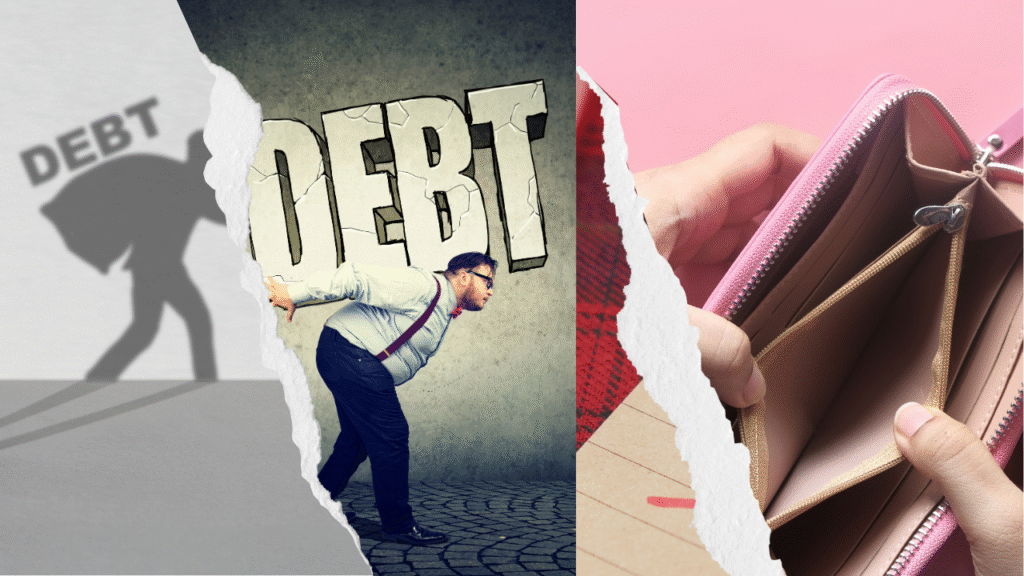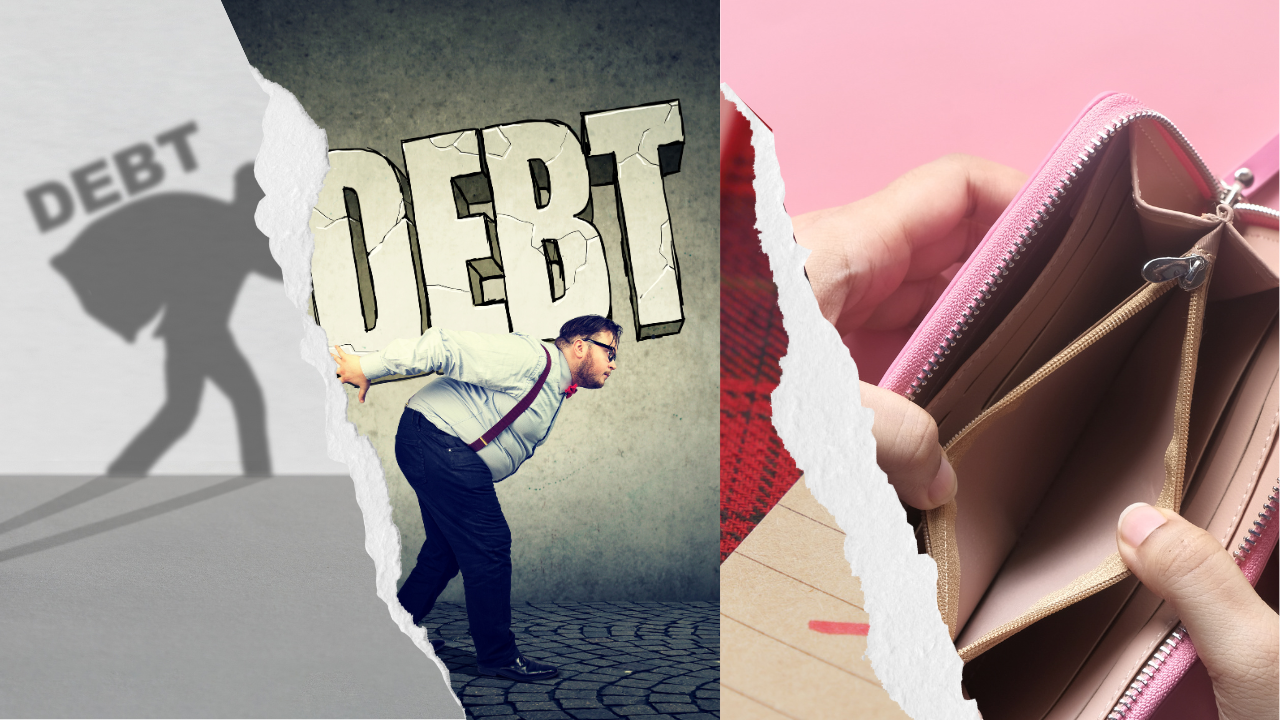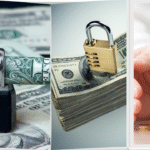Is a debt bubble about to burst? Many experts fear it might.
Financial analysts are sounding the alarm: the global economy may be on the brink of a debt bubble burst, with potentially catastrophic consequences. From soaring government debts to overleveraged corporations and households drowning in loans, the warning signs are impossible to ignore. If this bubble pops, the fallout could rival—or even surpass—the 2008 financial crisis.
In this blog, we’ll examine:
✔ What exactly is a debt bubble?
✔ Key indicators that a burst is imminent
✔ Which sectors are most at risk?
✔ How to protect your finances before it’s too late
The financial system today stands on shaky ground, with hidden risks lurking beneath the surface. Rising debt levels across the globe fuel these concerns. Governments, businesses, and individuals borrow more than ever. This borrowing creates a complex web of obligations.
If one part fails, the entire system could face disaster. Understanding these risks is crucial. A bubble burst could impact economies, jobs, and daily life. It’s like a house of cards, where one wrong move topples everything. Analysts warn about high debt-to-GDP ratios and unsustainable lending practices. These elements increase vulnerability to economic shocks. By examining these hidden risks, we can better prepare. Awareness leads to informed decisions, safeguarding financial futures.

Credit: www.amazon.com
Debt Bubble Origins
What Is a Debt Bubble?
A debt bubble occurs when borrowing reaches unsustainable levels, fueled by easy credit, low interest rates, and speculative lending. When confidence wavers—whether due to rising rates, economic slowdowns, or defaults—the bubble can burst, triggering a financial crisis.
Warning Signs of an Impending Debt Bubble Burst
- Skyrocketing Global Debt
- Worldwide debt has hit a staggering $307 trillion (Institute of International Finance).
- Governments (U.S., Japan, EU) are borrowing at record levels, with debt-to-GDP ratios exceeding 100% in many nations.
- Corporate Debt Defaults Rising
- “Zombie companies” (firms that can’t cover interest payments) now make up 20% of publicly traded firms (Bank for International Settlements).
- High-yield bond defaults are climbing, especially in commercial real estate and retail sectors.
- Household Debt Stress
- Credit card delinquencies in the U.S. have surged to 2012 levels (Federal Reserve).
- Mortgage defaults are rising as homeowners struggle with high rates and inflation.
- Central Banks Trapped
- The Fed, ECB, and others face a dilemma: cut rates to ease debt burdens (risking inflation) or hike rates (triggering defaults).
The debt bubble began long ago. People borrowed more money than they could pay back. Banks offered easy loans. Everyone wanted a better life. This made debt grow fast. Over time, debt became risky. Some borrowers could not pay back. This hurt banks and people.
Low interest rates make borrowing cheap. People love cheap loans. They borrow more than they need. Credit cards are easy to get. Spending grows fast. Governments also borrow too much. They spend on big projects. This makes national debt grow. These drivers push the debt bubble larger.
Current Financial Landscape
Sectors Most Vulnerable to a Debt Bubble Burst
1. Commercial Real Estate (CRE)
- Office vacancies remain near 20% post-pandemic, threatening $1.5 trillion in U.S. loans due by 2025.
- Major banks (like NY Community Bancorp) are already reporting CRE-related losses.
2. Emerging Markets
- Countries like Argentina, Pakistan, and Egypt are at risk of sovereign defaults.
- A strong U.S. dollar makes dollar-denominated debt repayment brutal.
3. Overleveraged Tech & Private Equity
- Startups that borrowed heavily during the near-zero-rate era now face refinancing at 5-7%+ rates.
- Private equity’s “buyout debt” could unravel if earnings decline.
Debt levels around the world are rising fast. Many countries owe more money than ever before. This can be risky. The more a country owes, the harder it is to pay back. Some experts worry about a possible debt bubble burst. If this happens, it can be bad for everyone. Prices might go up. Jobs could be lost.
Many economic signs show trouble. Markets are shaky. Interest rates change a lot. These changes make planning hard. People worry about their savings. Businesses watch closely. They want to know what comes next. Some think a recession is near. Others hope for growth. Watching these signs is key.

Warning Signs
Stock prices jump up and down. This is called market volatility. Investors feel scared. They worry about losing money. Banks may face trouble too. High market volatility can lead to a big problem. People might lose trust in the market. This can cause a crash. Watch out for sudden changes. They signal danger. Keep an eye on market trends. They may tell us more.
Interest rates are getting higher. This means borrowing money costs more. People and businesses have less money. They struggle to pay their debts. High rates can slow down the economy. Loans become expensive. This causes a big problem. Some banks might fail. Rising interest rates can lead to a crisis. Be alert and stay informed. Check news on interest rates often.
Impact On Economies
How to Protect Yourself Before the Bubble Bursts
✅ 1. Reduce Exposure to High-Risk Debt
- Sell junk bonds, high-yield ETFs, and overleveraged stocks.
- Avoid long-term corporate bonds from weak sectors (retail, CRE, airlines).
✅ 2. Shift to Defensive Assets
- Cash & Short-Term Treasuries: Safe havens if markets panic.
- Gold & Bitcoin: Hedge against currency devaluation.
- Utilities & Healthcare Stocks: Resilient in downturns.
✅ 3. Pay Down Personal Debt
- Prioritize credit cards, variable-rate mortgages, and auto loans.
- Refinance fixed-rate debt now before lenders tighten standards.
✅ 4. Prepare for a Liquidity Crunch
- Keep 6+ months of expenses in FDIC-insured accounts.
- Diversify across currencies (Swiss franc, Singapore dollar).
Debt bubble bursts can shake economies, causing financial instability. Hidden risks in today’s system may lead to crises. Monitoring these risks is crucial to prevent economic damage.
Developed Nations
The debt bubble burst can cause serious problems in developed countries. Banks might lose money. Businesses could close. People might lose jobs. Governments might have less money to spend. Taxes could rise. People may spend less. Economic growth could slow down. Stock markets might fall. Pension funds may shrink. Debt levels could increase even more.
Emerging Markets
Emerging markets face big risks if the debt bubble bursts. Currency values might drop. Investors could pull out their money. Inflation might rise quickly. Imports might become expensive. Exports might fall. Governments might struggle to pay debts. Social unrest could increase. Unemployment might go up. Infrastructure projects might stop. Local businesses may suffer.
Corporate Debt Risks
Leverage is a big word in finance. It means borrowing money. Companies often borrow a lot. Sometimes, they borrow too much. This creates risks. If a company can’t pay back, it may go bankrupt. Too much debt can hurt a company. This is a danger for investors. Understanding this risk is important.
Sector vulnerabilities vary a lot. Some sectors borrow more than others. For example, tech companies often have low debt. But energy companies might have high debt. Each sector has its own risks. Investors should know these risks. This helps in making smart choices.
Consumer Debt Challenges
Many families face rising household debt. Bills pile up quickly. Loans, credit cards, and mortgages all add pressure. It’s tough to manage monthly payments. Interest rates can make debts grow fast. Some families can’t keep up. This leads to stress and worry. Planning a budget helps. It’s important to understand spending habits. Save where you can. Every dollar counts. Simple changes make a big difference. It’s about smart choices. Spending less than you earn is key.
Access to credit can be tricky. Banks might not lend easily. Good credit history is crucial. Without it, loans become hard to get. Credit scores matter a lot. They affect loan approvals. Low scores mean higher interest rates. That makes borrowing costly. It’s important to pay bills on time. This helps improve scores. Saving money helps too. Having savings means less borrowing. It’s about using credit wisely. Don’t borrow more than needed. Understand terms before signing. Smart borrowing protects against debt.
Policy Responses
Governments often act to prevent financial crises. They may inject money into the economy. This helps banks and businesses stay afloat. Sometimes, they lower interest rates. This makes borrowing cheaper for people and companies. Another way is by buying troubled assets. This action helps stabilize the markets. Governments can also create emergency funds. These funds provide quick help in tough times. They aim to restore confidence in the financial system.
New rules can protect the economy. Regulators may set limits on risky activities. This keeps banks from taking too much risk. They can increase capital requirements. Banks must hold more money in reserve. This ensures they can cover losses. Stricter reporting rules are common too. Banks must share more information. This helps keep the system transparent. The goal is a safer financial environment for everyone.

Credit: en.wikipedia.org
Future Outlook
Exploring today’s financial system, hidden risks are emerging, particularly with the looming debt bubble burst. This situation threatens economic stability, creating uncertainty for future financial outlooks. Understanding these risks can help prepare for potential disruptions in the economy.
Potential Scenarios
The debt bubble might burst soon. Economic instability could follow. Banks might suffer huge losses. This might lead to a recession. People could lose jobs. Families might face financial struggles. Businesses could close down. This would be very challenging.
Some experts predict a slow recovery. Others think it might take years. Governments might need to step in. They could offer support to banks and people. This might help stabilize the economy. But it might take time.
Long-term Implications
Debt problems affect the future. Interest rates might rise. Loans could become costly. People might borrow less. This can slow down economic growth. Saving might become more important. Families could change spending habits.
Education about financial risks could increase. People might learn more about money. This can help avoid future crises. The world might work together. Countries could make stronger rules. This might help prevent new bubbles. But it needs careful planning.

Credit: www.amazon.com
Frequently Asked Questions
What Happens When The Debt Bubble Bursts?
A debt bubble burst leads to massive financial instability. Asset prices fall sharply, causing economic downturns. Banks face liquidity issues, increasing defaults. Investors lose confidence, triggering market panic. Governments may intervene to stabilize the economy, often through bailouts or monetary easing.
Recovery can be slow and challenging.
How Did This Burst Bubble Lead To The Financial Crisis?
The burst bubble triggered massive defaults, collapsing banks and financial institutions. It caused a severe credit crunch, halting investments. This led to job losses, reduced consumer spending, and a global recession. The crisis highlighted systemic weaknesses and prompted regulatory reforms to prevent future financial collapses.
What Was The Bubble In The 2008 Financial Crisis?
The 2008 financial crisis bubble was in the housing market. Home prices soared due to risky lending practices. Banks issued subprime mortgages, leading to widespread defaults. This housing bubble burst, causing major financial institutions to collapse. The crisis triggered a global economic downturn.
What Causes A Debt Bubble To Burst?
A debt bubble bursts when borrowers can no longer meet their obligations. High leverage and economic downturns often trigger this scenario. Rising interest rates can also exacerbate the situation, leading to defaults. When defaults increase, the financial system faces significant instability, affecting banks and investors alike.
Conclusion
Debt bubbles can shake financial systems. Risks lurk beneath the surface. Trust in the economy wavers. Smart choices can steer away from trouble. Stay informed about financial trends. Awareness helps shield against unexpected shocks. Secure financial health by understanding potential pitfalls.
Balance debt with manageable repayment plans. Keep monitoring market signals for shifts. Knowledge empowers better financial decisions. Stay proactive in protecting your assets. Navigate financial uncertainties with caution. Financial stability requires vigilance and foresight. Remember, the economy is unpredictable. Stay prepared for any eventuality.
Make wise financial choices today.

Lydia Short is a distinguished figure in the realm of “how-to” business expertise, known for her insightful guidance on navigating the intricacies of entrepreneurship. With a comprehensive background in business strategy and management, Lydia Short has emerged as a go-to expert for practical advice on starting, growing, and optimizing businesses. Her career is defined by a commitment to demystifying the complexities of business operations and providing actionable insights to aspiring entrepreneurs. Whether elucidating effective marketing strategies, streamlining operational processes, or offering guidance on strategic decision-making, Lydia Short’s expertise encompasses a wide spectrum of business-related topics. As a “how-to” business expert, she serves as a valuable resource, empowering individuals with the knowledge and tools needed to turn entrepreneurial visions into successful ventures. Lydia Short’s contributions continue to shape the landscape of business education, making her a trusted mentor and advisor for those navigating the challenging yet rewarding journey of entrepreneurship.


